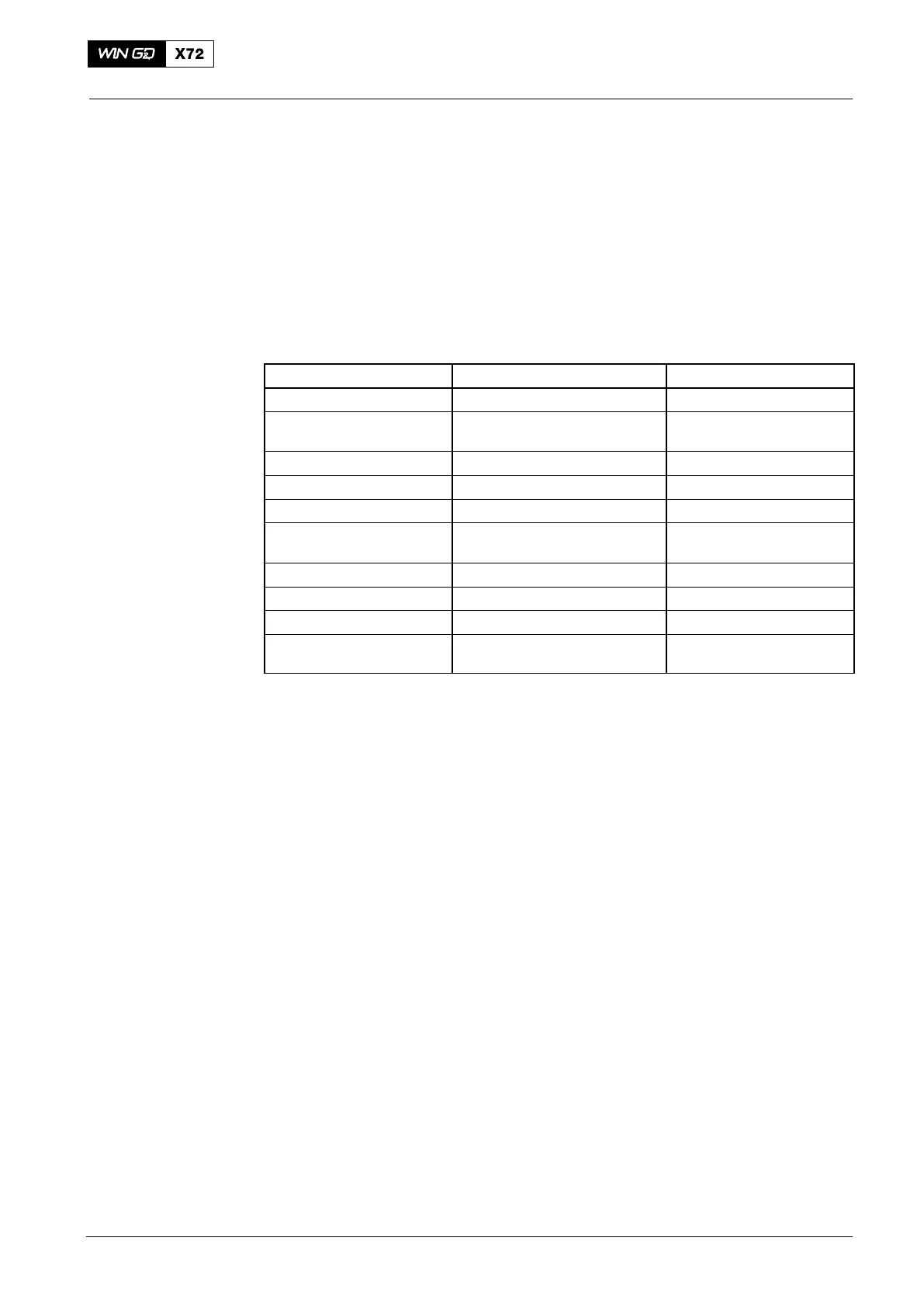Operation
0750−1/A1
Winterthur Gas & Diesel Ltd.
3/ 18
If one of the limits of the system oil is at a value given in the table above, applicable
procedures must be done to correct the problem. Such procedures can be purification
(decrease of the flow rate, adjustment of temperatures), treatment in a renovating
tank (settling tank) or partial exchange of the oil charge. It is recommended that you
speak to the oil supplier in such a condition.
The oil condemnation limits are given in Table 2. If the oil condition has so much
deterioration that the purifier and filters cannot make the condition better, some of the
oil charge must be replaced. The oil charge will then go back to a satisfactory
performance level.
Table 2: Condemnation Limits
Parameter Limit Test Method
Viscosity at 40_C Maximum 150 mm
2
/s [cSt] ASTM D 445
Flash point (PMCC)
Minimum 180_C
ASTM D 92
Total insolubles Maximum 1.0% m/m ASTM D 893b
Base Number (BN) Maximum 15 mg KOH/g ASTM D 2896
Water content Maximum 0.30% m/m ASTM D 95
Strong Acid Number
(SAN)
nil mg KOH/g ASTM D 664
Calcium Maximum 6000 mg/kg [ppm] ICP
Zinc Minimum 100 mg/kg [ppm] ICP
Phosphorous Minimum 100 mg/kg [ppm] ICP
FZG gear machine test Minimum failure load stage 8 ISO 14635-1 (test
method A/8.3/90)
These limits are a guide. The condition of the oil in the system cannot be fully
calculated by one parameter. Other oil parameters must be used to find the cause of
the problem, and the applicable treatment.
If the Base Number (BN) of the system oil increases suddenly, do a check of the
piston rod gland box and piston rod condition.
Some consumption and replenishment of the system oil is necessary to keep the oil in
good condition.
If there is an important decrease in the flash point below the recommended value
shown above, Wärtsilä Services Switzerland Ltd. recommends a replenishment of the
oil charge.
A replacement of the oil charge prevents an increase in the system oil BN. A small
increase in BN is often an indication that the system oil consumption is low.
The open cup type of flash point test procedure (e.g. COC) must be used to decide if
some of the oil, or a full oil change is necessary. The closed cup type of flash point
test procedure (e.g. PMCC) can be used to monitor the system oil condition, but not
for oil change.
The FZG performance (to the procedure in ISO 14635−1) of the oil is important if a
new gear wheel is installed or was polished. This gives protection against scuffing
during the running-in of the gears.
2016−11
Lubricating Oils
